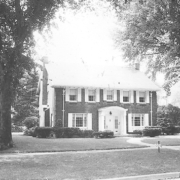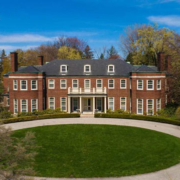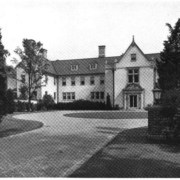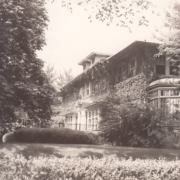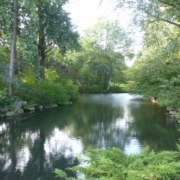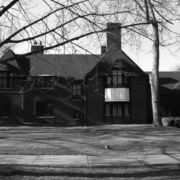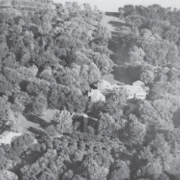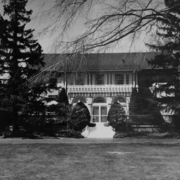Historical Architecture of Grosse Pointe – 1009 Yorkshire Road
Last week we concluded our two-part series on how the schools in Grosse Pointe got their names. The schools in Grosse Pointe have, and always will, play a significant part in the community. Not only were they designed by noted architects, but their names pay homage to the incredible individuals who helped shape the educational system we know today.
This week we head to Grosse Pointe Park to explore 1009 Yorkshire. This stunning center entrance Colonial was completed in 1936, for Clarence E. Bleicher, president of DeSoto Motors.
1009 Yorkshire is typical of the larger family homes that were constructed in Grosse Pointe during the 1920’s and 1930’s. They were created for prominent businessmen and were generally designed by an established architect. However, in the case of 1009 Yorkshire the architect, so far, has not been confirmed. It has been suggested it was designed by the nationally recognized Albert Kahn. His name was linked to the home in a research document written by Bruce L. Sanders; however, the claim is lacking evidence to support it and without the blueprints it is almost impossible to verify.
Despite the inability to prove it is a house created by Albert Kahn 1009 Yorkshire remains an important historic home. It is built on a piece of land that is particularly significant given that it was once the location of the Poupard farm. During the 1800’s the Poupard ribbon farm encompassed the land that is now home to the streets of Bishop, Kensington and Yorkshire. The area (that became Yorkshire Road) ran down the middle of the farm. Based on research by the Grosse Pointe Historical Society we understand “the farm was bounded by the lake on the south, Harper Avenue on the North, Bishop Road on the east and Kensington Road on the west. Source: Grosse Pointe Historical Society. The land was owned by Simon and Genevieve Poupard who were once members of one of the most prosperous families to have inhabited Grosse Pointe.
On 16 January 1869, Simon Poupard passed. Then, following the death of Genevieve Poupard (on 10 September 1881), the farm was inherited by their son Charles. Around twenty years later, Charles L. Poupard passed on 6 July 1902. Following his death, it is understood the Poupard Farm underwent a drastic change in that it was divided between the various members of the Poupard family. In 1904, it was reported the family agreed to sell part of the property, and eleven years later, in 1915, the remainder of the farm was sold to three land companies. Later that year the Berkshire Land Company acquired all rights to the land. Source: The Joseph Socier Farm: Bishop Road 1000 Block by Bruce L. Sanders.
In 1916, Edmund F. Poupard, who still owned part of the original farm, replaced what was the original Poupard farmhouse, with his new home, 1011 Yorkshire (you can read the full story here). At that point the residence was surrounded by much open land that had yet to be developed – the adjacent homes 1015 Yorkshire and 1009 Yorkshire were not completed until 1927 and 1936 respectively, while the home directly opposite 1008 wasn’t built until 1923.
When 1009 Yorkshire was completed (in 1936) it was part of a significant number of the homes in the area that were constructed during what was a remarkable period of development in the community of Grosse Pointe Park. Yorkshire Road became home to many significant people, who at the time were heavily involved in the growth of Detroit and Grosse Pointe. They were from a variety of industries, such as auto companies, commerce, education, along with key figures in public service, and journalism. One such person was Clarence E. Bleicher, president of DeSoto Motors, who commissioned 1009 Yorkshire.
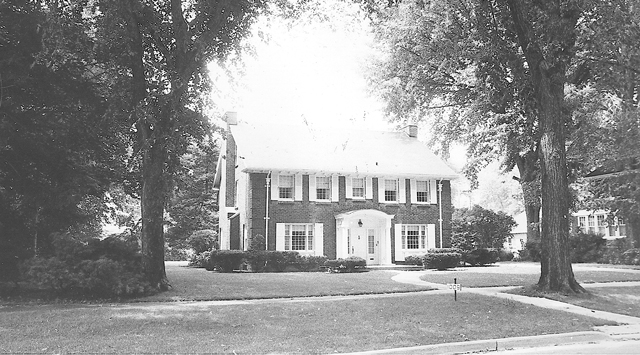
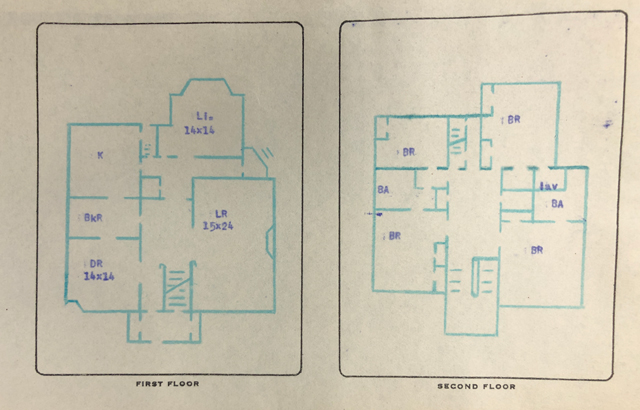
Clarence E. Bleicher was born on 25 March 1890, in Dayton, Ohio. He was described as “one of the first great mechanics of auto production.” After attending the University of Dayton Mr. Bleicher left to become an apprentice mechanic at the Stoddard Dayton auto plant. It is reported “for five years he was a journeyman tool and die maker, later becoming chief engineer of the Carroll Engineering Co., a tool jobber for early auto firms.” Source: Detroit Free Press (September 1952). After he left Carroll Engineering, he took a position with the Chrysler Corp, where he held supervisory jobs for the early Chrysler 70 roadster, before moving to Detroit in 1926 to become the master mechanic for the Highland Park plant. As he rose through the ranks, he reached the position of master mechanic for the entire corporation. Then in 1937, he became vice president and by 1944, he was named president and general manager of DeSoto Motors. He was also a past commodore of the Grosse Pointe Yacht Club. Image courtesy of: Detroit Free Press (September 1952).
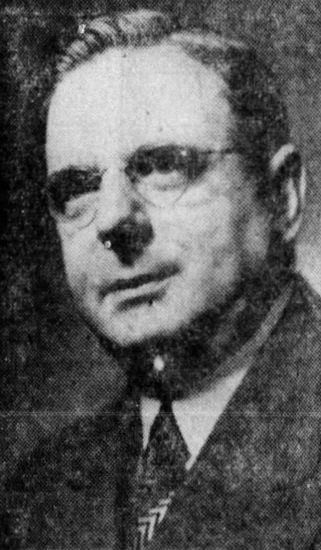
Clarence Bleicher married Alma D. Keller in 1913, and they had two children. Mr. Bleicher passed on 23 September 1952. It appears his wife Alma continued to reside at 1009 Yorkshire until at least 1979. She passed on 20 May 1980, at which point the property was listed for sale in July by her daughter Alma (it’s first time on the market since it was built). Since then, the house has only been sold three times and is on the verge of welcoming its fifth owner.
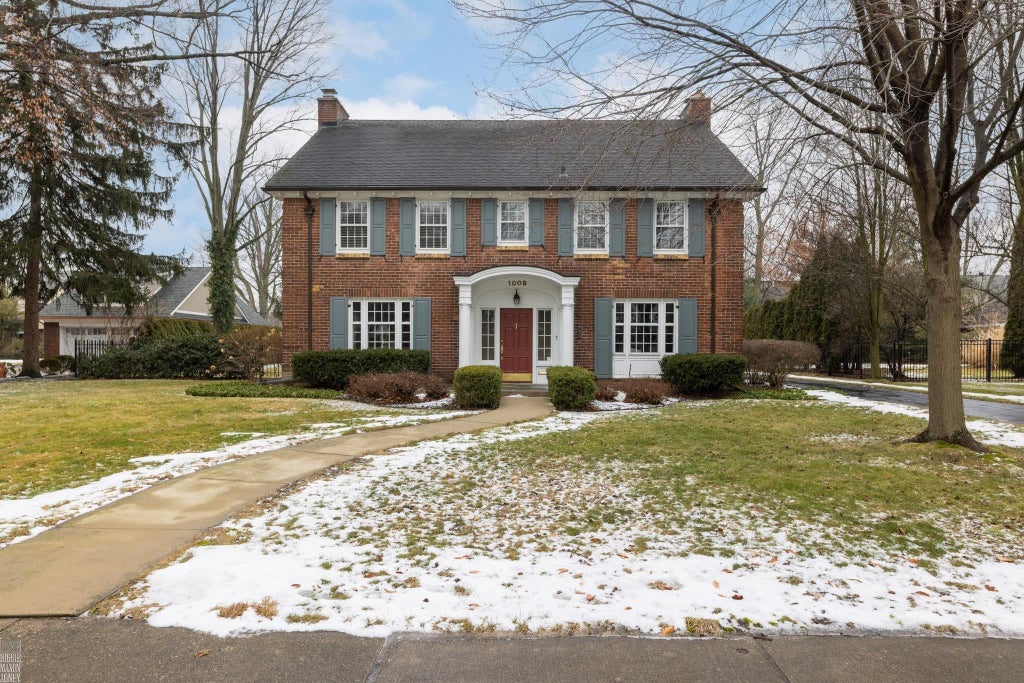
1009 Yorkshire is an historic property. At the time of writing the architect still cannot be verified. We hope that, in the future, the much-needed evidence confirming it was designed by Albert Kahn can be found – wouldn’t that be fantastic!
* Photos courtesy of the Higbie Maxon Agney archives unless stated.
** Research, information, and data sources are deemed reliable, but accuracy cannot be fully guaranteed.
Written by Katie Doelle
Copyright © 2025 Katie Doelle

